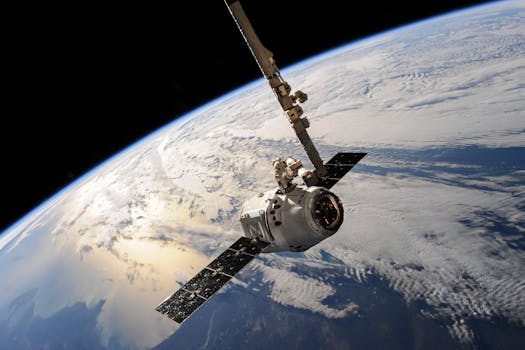MEO Satellites: Revolutionizing Global Communication with Medium Earth Orbit Technology – MEO satellites

MEO Satellites: Revolutionizing Global Communication with Medium Earth Orbit Technology – MEO satellites
MEO satellites are revolutionizing the way we communicate globally, offering faster and more reliable connections. Medium Earth Orbit (MEO) technology has become a crucial component of modern satellite communication, providing a unique set of benefits that distinguish it from other orbit types. In this article, we will delve into the world of MEO satellites, exploring their history, advantages, and applications, as well as the impact they have on the future of global communication.
Medium Earth Orbit satellites operate at an altitude of approximately 2,000 to 36,000 kilometers above the Earth’s surface. This orbit type is strategically positioned between Low Earth Orbit (LEO) and Geostationary Orbit (GEO), offering a balance between the two. MEO satellites are designed to provide global coverage, with a focus on delivering high-speed data transmission and communication services.
The history of MEO satellites dates back to the 1990s, when the first Medium Earth Orbit satellite was launched. Since then, the technology has evolved significantly, with advancements in satellite design, propulsion systems, and communication equipment. Today, MEO satellites play a vital role in various industries, including telecommunications, navigation, and Earth observation.
Advantages of MEO Satellites
MEO satellites offer several advantages over other orbit types. One of the primary benefits is their ability to provide global coverage with a relatively small number of satellites. This is because MEO satellites have a larger footprint than LEO satellites, allowing them to cover more area with fewer satellites. Additionally, MEO satellites have a lower latency compared to GEO satellites, making them ideal for real-time communication applications.
Another significant advantage of MEO satellites is their resistance to interference from other satellites and terrestrial systems. This is due to their higher altitude, which reduces the risk of interference and allows for more reliable communication. MEO satellites also have a longer lifespan compared to LEO satellites, with an average operational lifetime of 10 to 15 years.
Applications of MEO Satellites
MEO satellites have a wide range of applications across various industries. In the telecommunications sector, MEO satellites are used to provide broadband internet, mobile connectivity, and voice services. They are particularly useful in remote and underserved areas, where terrestrial infrastructure is limited or non-existent.
In the navigation sector, MEO satellites are used to provide location-based services, such as GPS and GLONASS. These satellites transmit radio signals that allow receivers on the ground to determine their precise location and velocity. MEO satellites are also used in Earth observation, providing high-resolution images and data on weather patterns, climate change, and natural disasters.
Future of MEO Satellites
The future of MEO satellites looks promising, with ongoing advancements in technology and increasing demand for global connectivity. The development of new satellite constellations, such as the O3b and OneWeb networks, is expected to further expand the capabilities of MEO satellites. These constellations will provide higher-speed data transmission, lower latency, and greater global coverage, enabling a wide range of applications, from broadband internet to IoT connectivity.
In conclusion, MEO satellites are revolutionizing the way we communicate globally, offering faster and more reliable connections. With their unique set of benefits, including global coverage, low latency, and resistance to interference, MEO satellites are poised to play a vital role in the future of satellite communication.



